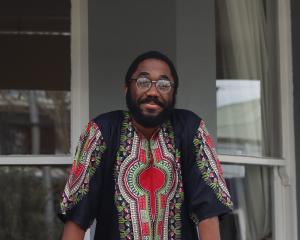Charmian Smith reviews Four Fish: The story of fishing and what's left to eat.

Paul Greenberg
Viking, $40, pbk
Are fish wildlife or industrial products? Our attitude to the creatures of the sea, or seafood as many of us think of them - if we think of them at all - may make a great difference to the sustainability of our oceans, according to American journalist and lifelong fisherman, Paul Greenberg.
Whales and dolphins may count as wildlife (at least to most people), but endangered blue-fin tuna, orange roughy, Atlantic cod, and many other endangered species do not, but perhaps they should.
We're told to eat more fish for our health, but we want it cheap and because fish are underwater and out of sight, it has led to a huge psychological denial, he says.
"With wild fish we have chosen, time after time, to ignore the fundamental limits the laws of nature place on eco-systems and have consistently removed more fish than can be replaced by natural processes," he writes.
It would appear we're eating the sea empty of fish, or at least the favoured species.
It's not only caused by overfishing but also by degrading the environment - rivers, lagoons, marshes and coastal waters - which not only affects spawning grounds, but causes a decline in the humble small fish and krill on which bigger fish depend for their food.
And such small fish as anchovies, sardines and herring are made into fish meal, not only for farmed fish, but also for feeding pigs and chickens.
But what to do about it? In this thoughtful and very readable book, Greenberg explains how we got into this situation and what humans might do to remedy it.
Internationally agreed no-fishing reserves would allow some species to recoup, but we must not overfish them if and when they recover, he suggests.
He investigates four of the most popular eating species (in the northern hemisphere), salmon, sea bass, Atlantic cod and blue-fin tuna, how natural populations have declined, how people have tried, successfully or not, to farm them or similar species.
Not all fish farming is sustainable. Salmon, for instance, need feed made from other fish, and their waste can degrade the environment, although it would appear that salmon farms in the southern hemisphere may be less of a problem than those in the north.
While industrially fished Atlantic cod provided cheap fish until the fisheries collapsed, hoki from New Zealand waters has been targeted to replace it, to the concern of New Zealand Forest and Bird, which questions the sustainability of the already declining fishery.
Greenberg suggests we should abandon industrial fishing and regard fish as wildlife, like game to be hunted and conserved.
He gives an example of the world's only Fair Trade fishery in Alaska, where Yukon king salmon is caught in traditional ways by the indigenous people and flown to up-market restaurants in New York and other cities.
For less highly priced fish, farming may be one answer, although not of the species that have been so popular but which are not necessarily suited to farming.
Instead, he suggests farming species such as the fertile, docile Australian barramundi, the Southeast Asian tra, which can breathe air and eat a vegetarian diet, and the Pacific kahala which breeds freely, converts feed to flesh at a good ratio, and appears to be able to be farmed sustainably.
It just needs a paradigm shift in our attitudes to fish and seafood, something this book, and other books, films and campaigns may help us make.
- Charmian Smith is a specialist food writer.












